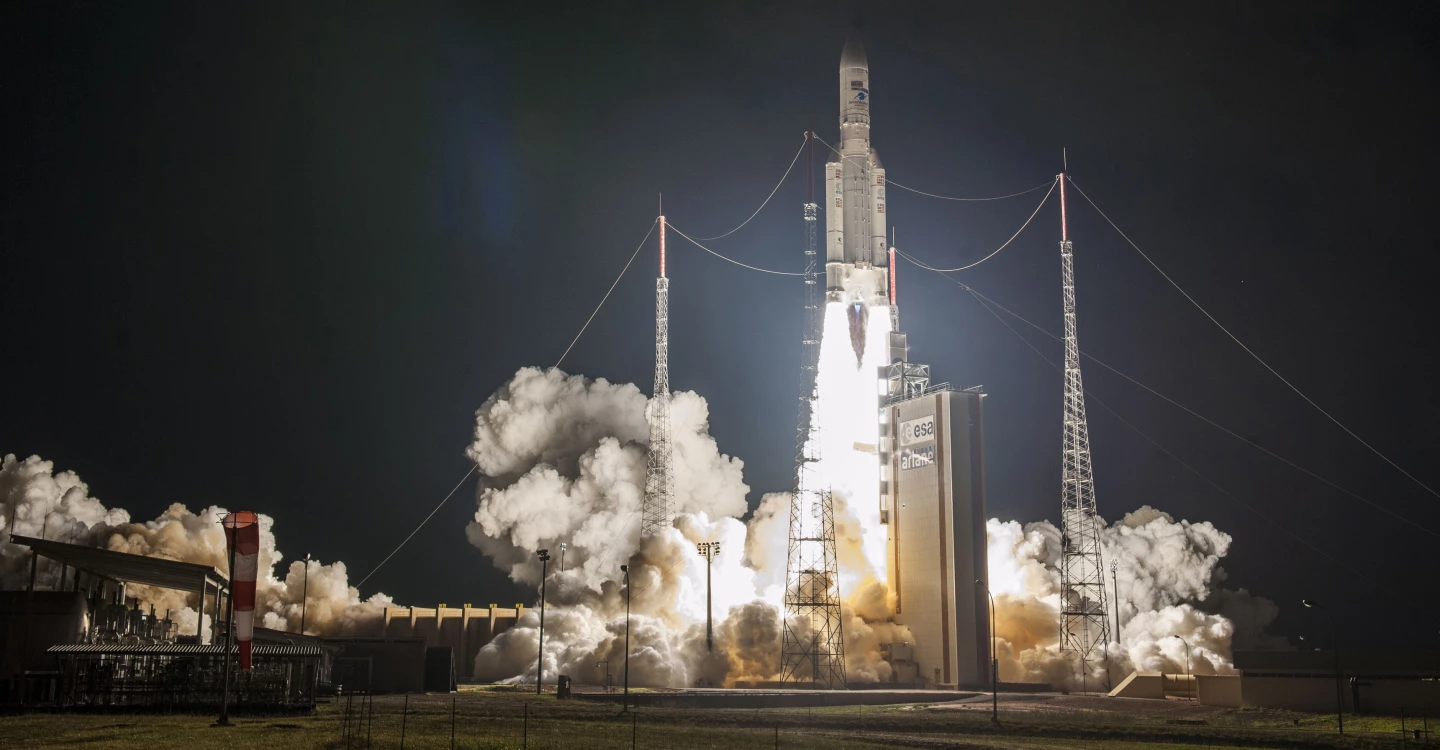Kerbal Space Program (KSP) is set to get a new, free update in partnership with the European Space Agency that will bring world-famous missions and hardware to the physics-based rocketry game. Players will gain access to all the parts needed to create their own Ariane 5 heavy-rocket, and follow in the steps of two flagship missions from ESA's past and present – the Rosetta comet-chasing mission, and Bepicolombo's ongoing voyage to Mercury.
In KSP you take control of an enterprising race of simple green beings known as the Kerbals. They look to shrug off the surly bonds of gravity that bind them to their home world, Kerbin, in order to explore their solar system.
The Kerbol system somewhat parodies our own solar system, albeit at a smaller scale and with a fair amount of artistic license thrown in. For example, where we have Mars orbiting outside of Earth, the Kerbals have a dusty world called Duna. Meanwhile the radiation-scorched planet Mercury has its own barren approximation in KSP called Moho.
To get to these other worlds, you need to build rockets. They must be structurally and aerodynamically sound, properly staged, and most importantly powerful enough to punch through Kerbin’s dense atmospheric layers in order to reach orbit. Also, solar panels are required – forget them at your peril.
The free Shared Horizons update coming to KSP in the near future will add another touch of the real to the Kerbol system by adding all of the components you need to construct your very own Ariane 5 heavy-lift rocket.
The European-built Ariane 5 has been faithfully tending to ESA’s launch needs since its first outing in 1996, and has since racked up over 100 successful launches. A fully constructed Ariane 5 rocket can tower 50.5 m (165 ft) above the launch pad, and upon liftoff is powered by a cryogenic core stage mounted with a single Vulcain engine and two massive strap-on solid fuel boosters.
Of course, KSP players are also free to use the Ariane parts to construct their own iterations of the faithful rocket ... some of which are sure to be as imaginative as they are monstrous.

The update will also allow gamers to play through two scenarios from ESA’s past and present. The first scenario is based on the world-famous Rosetta/Philae comet chasing mission. The Rosetta spacecraft was launched in 2004, and spent roughly 10 years travelling through the solar system before becoming the first spacecraft to rendezvous with a comet as it orbited the Sun.
Once in orbit, Rosetta and its little Philae lander captured stunning imagery and data that revolutionized our understanding of wandering comets.
The second scenario centers around the current BepiColombo mission to Mercury. Whilst launched as a single unit, the ambitious mission is actually comprised of two orbiters that will study many aspects of the mysterious planet.
Upon arrival, the probes will have a mass of scientific busywork to get on with, including mapping Mercury’s barren surface, probing its chemical composition and internal structure, and examining the dynamics of its magnetosphere.
As players progress through the scenarios, they will be asked to capture a wealth of scientific data based on the actual tasks set for the Rosetta and Bepicolombo missions.
Finally, the update will allow players to dress their brave Kerbals in ESA spacesuits as they bumble around the solar system, learning orbital mechanics the hard way.
"Here at ESA, many of our engineers and scientists are very familiar with the Kerbal Space Program," commented Günther Hasinger, ESA's Director of Science. "Both Rosetta and BepiColombo are highly complex missions which have specific challenges but prove to be very rewarding for ESA and the global scientific community. Because of this, I am very happy that these ground-breaking science missions can be experienced on Kerbin as well as on Earth."
The update is set to drop on July 1 on PC, with console releases coming later this year.
Source: ESA





